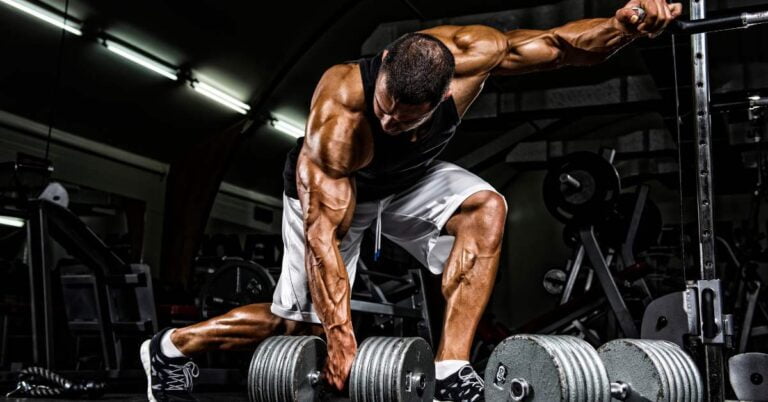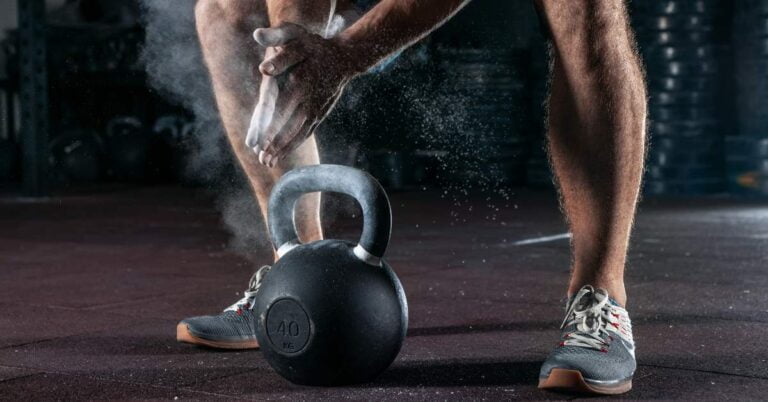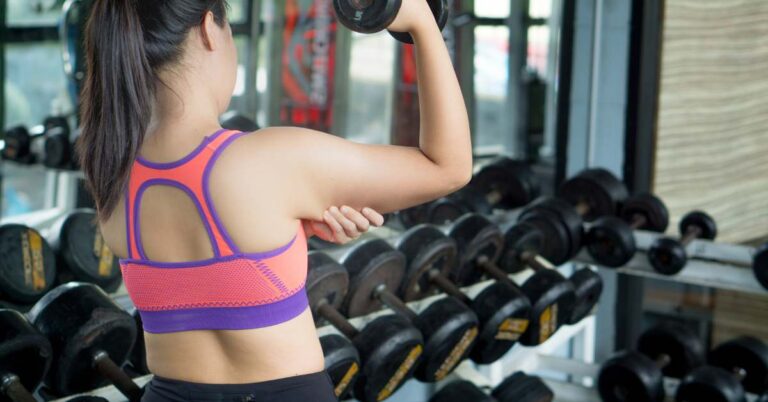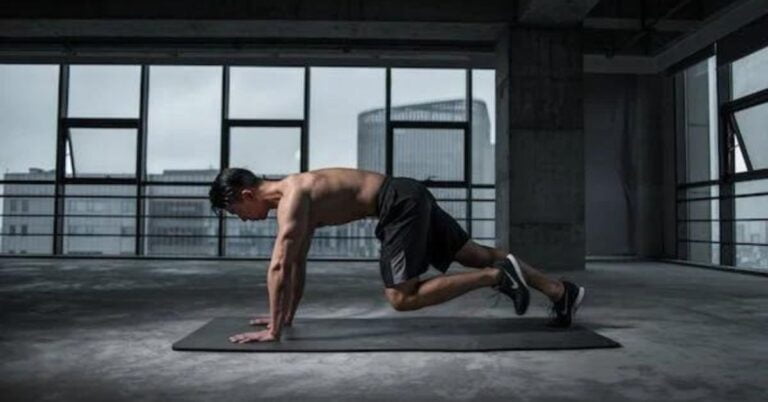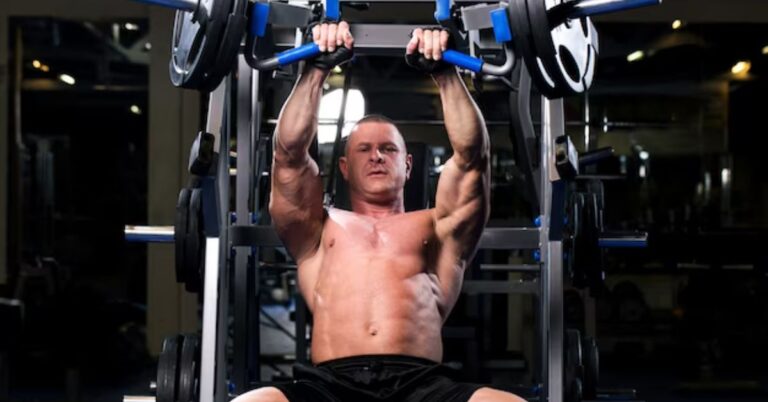10 Best Dumbbell Squats to Build Muscle & Strength
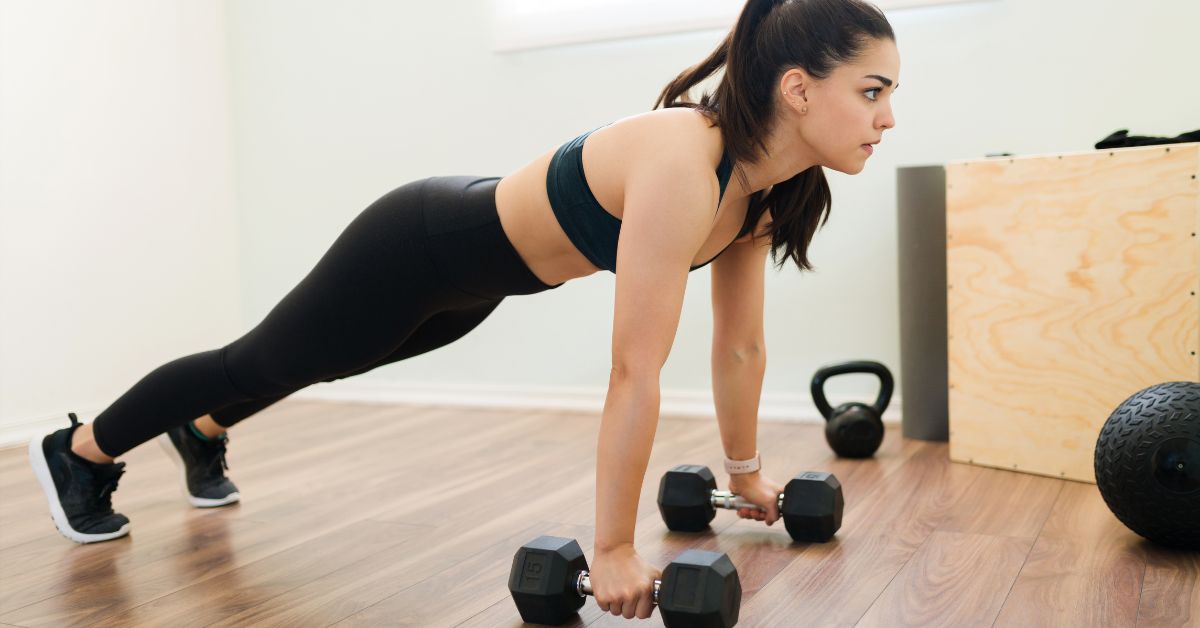
Are you looking to enhance your muscle strength and build a well-rounded physique? Dumbbell squats can be an excellent addition to your workout routine. This compound exercise targets multiple muscle groups, including the quadriceps, hamstrings, glutes, and core, making it a highly effective exercise for overall lower body development. This article will explore the top 10 dumbbell squats to help you achieve your muscle-building goals while optimizing strength gains.
Introduction
Dumbbell squats are versatile and accessible exercises that can be performed at home or in the gym. They effectively target the lower body muscles, promoting muscle growth, strength gains, and overall fitness. Incorporating different variations of dumbbell squats into your training regimen can add variety and challenge to your workouts, preventing plateaus and keeping your progress consistent.
Benefits of Dumbbell Squats
Dumbbell squats offer numerous benefits that contribute to your muscle-building and strength-development goals. Some key advantages include:
Targeted Muscle Engagement: Dumbbell squats engage multiple muscle groups simultaneously, including the quadriceps, hamstrings, glutes, and core. This compound movement maximizes muscle recruitment and stimulates overall lower body development.
Stabilizer Muscle Activation: Holding dumbbells during squats requires increased activation of stabilizer muscles, improving overall balance and coordination.
Increased Functional Strength: Dumbbell squats mimic real-life movements like bending, lifting, and carrying, enhancing functional strength that translates into daily activities and sports performance.
Joint Stability and Mobility: Performing squats helps strengthen the muscles surrounding the knees, hips, and ankles, promoting joint stability and mobility.
Versatility and Convenience: Dumbbell squats can be performed with minimal equipment, making them suitable for home workouts or when access to a barbell or gym equipment is limited.
Progression and Scalability: Dumbbell squats allow for incremental weight increases, enabling progressive overload and muscle adaptation.
Proper Form and Technique
To perform dumbbell squats effectively and safely is essential. Follow these steps for optimal results:
- Stand with your feet shoulder-width apart and hold a dumbbell in each hand, resting them at shoulder height.
- Engage your core, keep your back straight, and initiate the movement by bending your knees and hips simultaneously.
- Lower your body by pushing your hips back and down, ensuring your knees are aligned with your toes.
- Descend until your thighs are parallel to the ground or slightly below, maintaining a neutral spine and an upright torso.
- Drive through your heels, extend your knees and hips, and return to the starting position.
- Repeat for the desired repetitions, maintaining proper form throughout the movement.
Also Read: Dry Scooping Creatine: A Comprehensive Guide for Fitness
Top 10 Dumbbell Squats for Muscle & Strength
1. Goblet Dumbbell Squats
The goblet dumbbell squats are a popular variation of the squat exercise that targets the lower body muscles, particularly the quadriceps, hamstrings, glutes, and core. It is an excellent choice for beginners and advanced lifters, providing numerous benefits such as increased strength, muscle development, and improved mobility.
How to Perform the Goblet Squat
- Starting Position: Hold a dumbbell vertically with both hands, cupping the top end of the dumbbell against your chest. Place your feet shoulder-width apart while maintaining a small outward toe point.
- Engage Your Core: Brace your core by pulling your belly button toward your spine. Maintain a straight back and an upright torso throughout the exercise.
- Initiate the Descent: Initiate the movement by bending your knees and hips simultaneously as if sitting back in an imaginary chair. Your body should be lowered until your thighs are parallel to or just below the ground. Maintain a neutral spine and ensure that your knees align with your toes.
- Drive Through Your Heels: Push through your heels to reverse the movement and return to the starting position. Squeeze your glutes at the top of the squat to engage your posterior chain.
- Breathing Technique: Inhale as you descend and exhale as you drive through your heels to ascend. Keep your breathing regular throughout the activity.
- Repetition and Sets: Aim for three to four sets of 8-12 repetitions, depending on your fitness level and goals. Start with a lighter dumbbell and gradually increase the weight as you become more comfortable with the movement.
Benefits of the Goblet Squat
The goblet dumbbell squat offers several benefits that contribute to overall strength and muscle development:
- Muscle Activation: The goblet squat targets the quadriceps, hamstrings, glutes, and core muscles effectively, promoting balanced lower body development.
- Improved Mobility: The goblet squat encourages proper squatting mechanics, enhancing hip and ankle mobility. It can be particularly beneficial for individuals with a limited range of motion.
- Core Stability: Holding the dumbbell before your chest engages the core muscles, promoting stability and balance throughout the exercise.
- Lower Back-Friendly: The goblet squat places less stress on the lower back than barbell squats, making it a suitable option for individuals with lower back issues.
- Versatility and Convenience: Goblet Dumbbell squats can be performed with a dumbbell or kettlebell, making them accessible for home workouts or when barbells are unavailable.
Safety Considerations
To ensure a safe and effective goblet squat, keep the following tips in mind:
- Start with Proper Form: Focus on mastering the correct form and technique before increasing the weight. This helps prevent injuries and maximizes the benefits of the exercise.
- Maintain a Neutral Spine: Avoid rounding your lower back during the squat. Keep your chest lifted and shoulders back, and maintain a neutral spine throughout the movement.
- Choose an Appropriate Weight: Start with a weight that challenges you but allows you to maintain proper form. Increase the weight gradually as your strength and form get better.
- Warm-Up and Cool-Down: Prioritize a thorough warm-up to prepare your muscles and joints for the exercise. Afterward, incorporate a cool-down routine to aid recovery and prevent muscle soreness.
Incorporating goblet Dumbbell squats into your training routine can strengthen your lower body muscles, improve mobility, and enhance overall fitness. Remember to perform the exercise with proper form, gradually increase the weight, and listen to your body’s cues to prevent injury. Start reaping the benefits of goblet squats and elevate your fitness journey.
2. Bulgarian Split Dumbbell Squats
The Bulgarian split Dumbbell squat is a highly effective exercise targeting lower body muscles, including the quadriceps, hamstrings, glutes, and calves. It offers several benefits, such as increased strength, stability, and balance.
How to Perform the Bulgarian Split Squat
- Starting Position: Stand with your back facing away from a bench or elevated surface. Place the top of one foot on the bench, allowing the other foot to be in a split stance position. Your arms should remain at your sides as you hold a dumbbell in each hand.
- Engage Your Core: Activate your muscles by drawing your belly button toward your spine. Maintain an upright posture with your shoulders back throughout the exercise.
- Descend into the Squat: Lower your body by bending your front knee and hip. Keep your front knee in line with your toes, and aim to lower your back knee toward the ground without touching it.
- Drive Through Your Front Heel: Push through your front heel to extend your knee and hip, returning to the starting position. Squeeze your glutes at the top of the movement for maximum activation.
- Repetition and Sets: Perform 8-12 repetitions on one leg before switching to the other leg. Aim for three to four sets, adjusting the weight of the dumbbells to suit your fitness level and goals.
Benefits of the Bulgarian Split Squat
Incorporating Bulgarian split Dumbbell squats into your workout routine provides numerous benefits:
- Muscle Development: The Bulgarian split squat targets the major muscles of the lower body, including the quadriceps, hamstrings, glutes, and calves. This exercise helps to develop strength, size, and definition in these muscle groups.
- Unilateral Strength and Balance: Performing the Bulgarian split squat on each leg individually helps to identify and correct strength imbalances between the legs. It also improves balance and stability, benefiting sports performance and daily activities.
- Functional Movement: The split squat mimics movements in various sports and activities, such as lunging and stepping. Training with this exercise improves the functional strength and stability needed for these movements.
- Core Engagement: The Bulgarian split squat activates the core muscles, including the abdominals and obliques, to maintain peace and balance throughout the exercise.
- Flexibility and Mobility: This exercise requires a good range of motion in the hip flexors, hamstrings, and ankles. Consistently performing Bulgarian split Dumbbell squats can improve flexibility and mobility in these areas.
Safety Considerations
To perform Bulgarian split Dumbbell squats safely and effectively, consider the following tips:
- Maintain Proper Form: Keep your front knee aligned with your toes and ensure your back knee is not excessively touching the ground. Keep your posture upright during the motion.
- Start with Bodyweight: If you’re new to the exercise, practice the movement without the added weight or use a lower-weight dumbbell. Before advancing to heavier loads, concentrate on perfecting the technique.
- Gradually Increase Weight: As you become more comfortable with the exercise, progressively increase the weight of the dumbbells to continue challenging your muscles and promoting strength gains.
- Use a Stable Surface: Ensure your bench or elevated surface is stable and secure. It should be able to support your weight without wobbling or slipping.
Incorporating Bulgarian split Dumbbell squats into your workout routine can enhance lower body strength, stability, and balance. Focus on proper form, gradually increase weight, and listen to your body to ensure a safe and effective training experience.
3. Sumo Dumbbell Squats
The sumo squat is a powerful lower-body exercise primarily targeting the inner thighs, glutes, and quadriceps muscles. It is a variation of the squat that incorporates a broader stance and a turned-out foot position, resembling the perspective of a sumo wrestler.
How to Perform the Sumo Squat
- Starting Position: Stand with your feet wider than shoulder-width apart, toes pointing outwards at an angle of approximately 45 degrees. Hold a dumbbell in both hands vertically in front of your chest.
- Engage Your Core: Activate your core muscles by pulling your belly button towards your spine. Maintain an upright posture with your chest lifted throughout the exercise.
- Descend into the Squat: Bend your knees and hips simultaneously, lowering your body towards the ground. Keep your knees tracking in line with your toes and ensure your knees do not extend past your toes. Lower your body until your thighs are parallel to the ground or slightly below.
- Drive Through Your Heels: Push through your heels to extend your knees and hips, returning to the starting position. Squeeze your glutes at the top of the movement for maximum activation.
- Repetition and Sets: Aim for 8-12 repetitions per set. Perform three to four sets, adjusting the weight of the dumbbells according to your fitness level and goals.
Benefits of the Sumo Squat
Incorporating sumo Dumbbell squats into your workout routine offers numerous benefits:
- Inner Thigh and Glute Activation: The sumo squat emphasizes the inner thigh muscles (adductors) and glutes, helping to tone and strengthen these areas.
- Quadriceps Development: Sumo Dumbbell squats also target the quadriceps muscles responsible for knee extension and play a crucial role in lower body strength.
- Improved Hip Mobility: The wide stance and turned-out foot position of the sumo squat help to improve hip mobility, enhancing your overall range of motion.
- Core Stability: The sumo squat engages the core muscles to maintain stability and balance throughout the exercise, contributing to core strength development.
- Functional Strength: This exercise mimics movements in various sports and daily activities, such as lifting objects from the ground or performing tasks requiring lower body strength. You can improve your functional strength by incorporating sumo Dumbbell squats into your routine.
Safety Considerations
To perform sumo Dumbbell squats safely and effectively, keep the following tips in mind:
- Proper Form: Maintain good form throughout the exercise, keeping your chest lifted, knees in line with your toes, and an upright posture.
- Gradual Progression: If you are new to sumo Dumbbell squats, start with bodyweight or lighter dumbbells to practice the movement pattern and gradually increase the weight as you become more comfortable.
- Listen to Your Body: Pay attention to any discomfort or pain during the exercise. If you experience any issues, modify the exercise or consult a fitness professional for guidance.
- Warm-Up and Cool-Down: Prioritize a warm-up routine to prepare your muscles for the exercise and a cool-down to aid in recovery and reduce muscle soreness.
By incorporating sumo Dumbbell squats into your fitness routine, you can strengthen and tone your lower body while improving hip mobility and core stability. Remember to focus on proper form, gradually increase weight, and listen to your body to ensure a safe and effective workout experience.
4. Front Dumbbell Squats
The front squat is a highly effective lower-body exercise that primarily targets the quadriceps while engaging the glutes, hamstrings, and core muscles. It is performed by holding a dumbbell or barbell before the body, emphasizing the upper back and core stability.
How to Perform the Front Squat
- Starting Position: Stand with your feet shoulder-width apart and hold a dumbbell or barbell before your shoulders. Keep your elbows high and parallel to the ground, creating a “rack” position with your fingertips supporting the weight.
- Engage Your Core: Activate your core muscles by pulling your belly button towards your spine. Maintain an upright posture with your chest lifted throughout the exercise.
- Initiate the Squat: Bend your knees and hips simultaneously, lowering your body towards the ground. Keep your weight centered over your midfoot, and ensure your knees align with your toes.
- Maintain an Upright Torso: Keep your torso upright during the squat. This will help to engage your quadriceps and minimize stress on your lower back.
- Descend and Ascend: Continue lowering your body until your thighs parallel the ground or slightly below. Drive through your heels to extend your knees and hips, returning to the starting position.
- Repetition and Sets: Aim for 8-12 repetitions per set. Perform three to four sets, adjusting the weight of the dumbbell or barbell based on your fitness level and goals.
Benefits of the Front Squat
Incorporating front Dumbbell squats into your workout routine offers numerous benefits:
- Quadriceps Development: The front squat is an excellent exercise for targeting the quadriceps, helping to develop strength, power, and muscular endurance in the front of the thigh.
- Increased Core Stability: Holding the weight in front of your body challenges your core muscles to maintain stability and balance throughout the exercise. This contributes to improved core strength.
- Glute and Hamstring Engagement: While the quadriceps are the primary muscles targeted, front Dumbbell squats also engage the glutes and hamstrings to a lesser extent, promoting overall lower body strength and balance.
- Upper Back Strength: The front squat requires the upper back muscles to work isometrically to support the weight in the rack position. This can lead to improved upper body strength and posture.
- Functional Movement: The front squat mimics movements in daily activities and sports, such as lifting and carrying objects. You can enhance your functional strength for these movements by performing front squats.
Safety Considerations
To perform front Dumbbell squats safely and effectively, keep the following tips in mind:
- Proper Form: Maintain proper form throughout the exercise, with an upright torso and knees tracking in line with your toes. Keep your back straight and your knees from bending inward.
- Gradual Progression: If you are new to front dumbbell squats, start with lighter weights or body weights to master the technique and gradually increase the load as you become more comfortable and confident.
- Equipment and Grip: Choose an appropriate dumbbell or barbell weight for your fitness level. The clean grip (fingertips supporting the weight) or cross-arm grip can be used for the front squat.
- Warm-Up and Mobility: Prioritize a dynamic warm-up routine to prepare your muscles for the exercise and incorporate mobility exercises to improve hip and ankle flexibility.
By incorporating front dumbbell squats into your training regimen, you can target the quadriceps, engage the core, and promote lower body strength and stability. Focus on proper form, gradually increase the weight, and listen to your body to ensure a safe and effective workout.
5. Step-Up Dumbbell Squats
The step-up squat is a compound exercise that targets the lower body, specifically the quadriceps, hamstrings, and glutes. It combines the benefits of a squat and a step-up, making it an effective movement for building strength, stability, and coordination.
How to Perform the Step-Up Squat
- Position: Stand facing a sturdy platform or step approximately knee height. Each hand should hold a dumbbell and hang it at your sides.
- Step-Up: Lift your right foot and place it firmly on the platform. Push through your heel to lift your body onto the platform, fully extending your right leg. Simultaneously, engage your left glute and quadriceps to help propel your body upward.
- Squat: Once on the forum, descend into a squat by bending your right knee and hip. Lower your body until your right thigh is parallel to the ground, keeping your back straight and chest lifted.
- Drive Through Your Heel: Push through your right heel to extend your knee and hip, returning to the starting position on the platform.
- Step Down: Carefully step down with your left foot, followed by your right foot, returning to the ground.
- Repeat: Complete the desired number of repetitions on one side before switching to the other leg.
- Repetition and Sets: Aim for 10-12 repetitions per leg. Perform three to four sets, adjusting the weight of the dumbbells based on your fitness level and goals.
Benefits of the Step-Up Squat
Incorporating step-up squats into your workout routine offers several benefits:
- Lower Body Strength: Step-up squats target the major muscles of the lower body, including the quadriceps, hamstrings, and glutes. Regularly performing this exercise can develop strength and muscle tone in these areas.
- Balance and Stability: Step-up squats require balance and stability, particularly during the transition from the step-up to the squat and back down. This exercise helps improve coordination and overall lower body stability.
- Functional Movement: Step-up squats mimic movements involved in daily activities, such as climbing stairs or stepping onto elevated surfaces. Training these movements can enhance your functional strength and make everyday tasks easier.
- Unilateral Strength Development: Performing step-up squats individually on each leg helps identify and address any strength imbalances between your body’s left and right sides.
Safety Considerations
To perform step-up squats safely and effectively, keep the following tips in mind:
- Platform Height: Choose a platform height that allows your knee to bend at a 90-degree angle when in the squat position.
- Proper Form: Maintain good form throughout the exercise. Keep your back straight and chest lifted, and Don’t round your back or slouch forward.
- Controlled Movements: Focus on controlled movements throughout the exercise, especially during the step-up and step-down phases. Refrain from completing the workout utilizing momentum.
- Gradual Progression: Practice the movement pattern with bodyweight or light dumbbells. Increase the weight gradually as you gain comfort and confidence.
- Incorporating step-up squats into your workout routine can enhance lower body strength, balance, and stability. Focus on proper form, controlled movements, and gradual progression to maximize your results and minimize the risk of injury.
6. Overhead Dumbbell Squats
The overhead squat is a challenging and highly effective exercise that targets multiple muscle groups, including the quadriceps, glutes, core, and upper body. It involves holding a dumbbell or barbell overhead while performing a deep squat. This exercise helps improve overall strength, stability, and mobility.
How to Perform the Overhead Squat
- Starting Position: Your feet should be broader than shoulder-width apart as you stand. Hold a dumbbell or barbell with a pronated grip (palms facing forward) and extend your arms fully overhead. Ensure that your arms align with your ears and your core is engaged.
- Initiate the Squat: Lower your body by bending your knees and hips, keeping your weight on your heels. Descend deep squat while maintaining an upright torso and a neutral spine. Aim to lower your hips below parallel if you have mobility and flexibility.
- Maintain Overhead Stability: Keep the dumbbell or barbell stable and directly overhead throughout the squat. Engage your core and upper back muscles to maintain control and balance.
- Drive Through Your Heels: Push through your heels to extend your knees and hips, returning to the starting position. Throughout the action, keep your chest raised and your spine in a neutral position.
- Repetition and Sets: Aim for 8-12 repetitions per set. Perform three to four sets, adjusting the weight of the dumbbell or barbell based on your fitness level and goals.
Benefits of the Overhead Squat
Incorporating overhead dumbbell squats into your workout routine offers several benefits:
- Total Body Strength: The overhead squat is a compound exercise that engages multiple muscle groups, including the lower, core, and upper body. It promotes overall strength development and muscular balance.
- Improved Mobility and Flexibility: Performing overhead dumbbell squats requires a good range of motion in the shoulders, hips, and ankles. Regular practice can help improve joint mobility and flexibility, improving overall movement quality.
- Core and Postural Stability: Holding the overhead weight challenges your core muscles and promotes postural stability. It helps develop strength in the abdominal muscles, lower back, and shoulders.
- Enhanced Balance and Coordination: Overhead squats require high balance and coordination. Practicing this exercise can improve your body’s ability to stabilize and move efficiently.
Safety Considerations
To perform overhead dumbbell squats safely and effectively, keep the following tips in mind:
- Gradual Progression: Start with a lightweight or no weight to master the movement pattern and ensure proper form. Increase the weight gradually as you gain comfort and confidence.
- Proper Form: Maintain a neutral spine throughout the exercise. Avoid overarching your lower back or excessively leaning forward.
- Shoulder Mobility: Prioritize shoulder mobility exercises and stretches to improve your overhead range of motion and stability.
- Equipment and Grip: Use a dumbbell or barbell to maintain control and stability overhead. Try out several grip widths to see which one suits you the best.
Incorporating overhead squats into your training routine can challenge your entire body, improve strength and stability, and enhance functional performance. Remember to start with lighter weights, focus on proper form, and prioritize shoulder mobility for optimal results.
7. Curtsy Dumbbell Squats
The curtsy squat is a variation of the traditional squat that targets the lower body, particularly the glutes, quadriceps, and inner thighs. It is an effective movement for building strength, stability, and balance.
How to Perform the Curtsy Squat
- Starting Position: Stand with your feet shoulder-width apart and hold a dumbbell in each hand, allowing them to hang by your sides.
- Curtsy Step: Step diagonally backwards with your right foot, crossing it behind your left leg. For stability, keep your torso erect and use your core.
- Squat Descent: Lower your body by bending both knees, aiming to bring your right knee towards the ground without touching it. Maintain an upright posture and keep your weight balanced over the middle of your feet.
- Depth and Alignment: Descend into the squat until your left thigh is parallel to the ground or slightly below. Ensure that your left knee is in line with your left foot and avoid allowing it to collapse inward.
- Squat Ascent: Push through your left heel and extend your left knee and hip, returning to the starting position. Unwind your right leg from behind your left leg as you stand up.
- Repeat: Complete the desired number of repetitions on one side before switching to the other leg.
- Repetition and Sets: Aim for 10-12 repetitions per leg. Perform three to four sets, adjusting the weight of the dumbbells based on your fitness level and goals.
Benefits of the Curtsy Squat
Incorporating curtsy dumbbell squats into your workout routine offers several benefits:
- Glute Activation: The curtsy squat targets the glute muscles, particularly the gluteus medius and gluteus maximus, helping to shape and strengthen the buttocks.
- Quadriceps and Inner Thigh Engagement: Crossing one leg behind the other emphasizes the quadriceps and inner thigh muscles, promoting balanced leg development.
- Improved Balance and Stability: The curtsy squat challenges balance and stability as you step diagonally behind, requiring coordination and core activation. Regular practice can enhance your overall balance and strength.
- Functional Movement: The curtsy squat closely mimics movements involved in daily activities, such as stepping or lunging to the side. By training these movements, you can improve your functional strength and mobility.
Safety Considerations
To perform curtsy dumbbell squats safely and effectively, keep the following tips in mind:
- Proper Form: Maintain good form throughout the exercise. Keep your chest lifted, back straight, and knees aligned with your feet. Avoid leaning forward or rounding your back.
- Controlled Movements: Focus on controlled movements throughout the exercise, especially during the curtsy step and squat descent. Refrain from completing the workout utilizing momentum.
- Start with Bodyweight: If you are new to curtsy dumbbell squats, begin with bodyweight to practice the movement pattern and gradually add weights as you become more comfortable and confident.
- Flexibility and Mobility: Prioritize hip flexibility and mobility exercises to ensure proper form and range of motion in the curtsy squat. Incorporate exercises such as hip stretches and dynamic warm-ups into your routine.
Incorporating curtsy dumbbell squats into your lower-body training routine can help you strengthen your glutes, quadriceps, and inner thighs while enhancing balance and stability. Remember to focus on proper form, start with lighter weights, and prioritize flexibility for optimal results.
8. Single-Leg Dumbbell Squats
The single-leg squat, also known as the pistol squat, is a challenging exercise that targets the lower body, specifically the quadriceps, glutes, and hamstrings. It requires strength, balance, and stability, making it a highly effective movement for building functional leg strength.
How to Perform the Single-Leg Squat
- Starting Position: Stand tall with your feet hip-width apart and your arms extended in front of you. Lift your right foot slightly off the ground, pointing your toes forward.
- Squat Descent: Begin by bending your left knee and hips, lowering your body into a squat position. Extend your right leg forward, keeping it parallel to the ground throughout the movement.
- Depth and Alignment: Descend into the squat until your left thigh is similar to the ground or slightly below. Ensure that your left knee aligns with your left foot, and maintain an upright posture.
- Squat Ascent: Push through your left heel and extend your left knee and hip, returning to the starting position. Keep your right leg elevated throughout the movement.
- Repeat: Complete the desired number of repetitions on one leg before switching to another.
- Repetition and Sets: Aim for 8-10 repetitions per leg. Perform three to four sets, adjusting the difficulty level based on your fitness level and goals.
Benefits of the Single-Leg Squat
Incorporating single-leg dumbbell squats into your training routine offers numerous benefits:
- Leg Strength and Stability: The single-leg squat targets the muscles of the lower body, including the quadriceps, glutes, hamstrings, and calf muscles. It helps build strength, stability, and balance in the legs.
- Improved Balance and Coordination: Performing single-leg dumbbell squats requires significant balance and coordination. It enhances proprioception and body awareness, improving overall balance and stability.
- Functional Movement: Single-leg squats mimic movements in daily activities, such as walking, climbing stairs, or getting up from a seated position. By training these movements, you can improve your functional strength and mobility.
- Core Activation: Single-leg squats engage the core muscles to maintain stability and balance throughout the movement. It strengthens the abdominal muscles, obliques, and deep core stabilizers.
Safety Considerations
To perform single-leg squats safely and effectively, consider the following tips:
- Progress Gradually: If you are new to single-leg squats, start practicing without weights. You can gradually add dumbbells to increase the challenge as you gain strength and stability.
- Maintain Proper Form: Focus on maintaining proper form throughout the exercise. Keep your chest lifted, your back straight, and your knee aligned with your foot. Avoid excessive leaning or rounding of the back.
- Use a Support: If needed, use a support, such as a chair or a wall, to assist with balance and stability as you learn the movement. Over time, aim to perform single-leg squats without support.
- Flexibility and Mobility: Prioritize hip and ankle mobility exercises to ensure proper form and range of motion in the single-leg squat. Incorporate exercises such as lunges, hip stretches, and ankle mobility drills into your warm-up routine.
Incorporating single-leg squats into your fitness routine can help you develop unilateral leg strength, improve balance, and enhance functional performance. Remember to start with proper form, progress at your own pace, and listen to your body to avoid overexertion or injury.
9. Box Dumbbell Squats
The box squat is a variation of the traditional squat exercise that involves sitting back on a box or bench before standing around up. It is a highly effective lower body exercise that targets the quadriceps, hamstrings, glutes, and hips.
How to Perform the Box Squat
- Starting Position: Stand before a sturdy box or bench with your feet shoulder-width apart. Hold a dumbbell in each hand, allowing them to hang by your sides.
- Box Placement: Position the box behind you at a distance where your hips will lightly touch it when you sit back.
- Squat Descent: Initiate the squat by pushing your hips back and bending your knees. Sit back onto the box, maintaining a neutral spine and an upright posture.
- Box Touch: As your hips lightly touch the box, pause briefly to eliminate any momentum.
- Squat Ascent: Drive through your heels and extend your knees and hips, standing up from the pack to the starting position. Keep your chest lifted and maintain control throughout the movement.
- Repeat: Complete the desired number of repetitions, ensuring each squat is performed with proper form and control.
- Repetition and Sets: Aim for 8-12 repetitions per set. Perform three to four sets, adjusting the weight of the dumbbells based on your fitness level and goals.
Benefits of the Box Squat
Incorporating box dumbbell squats into your lower body workout routine offers several benefits:
- Increased Muscle Activation: The box squat allows for a deeper squat position, increasing muscle activation in the glutes, hamstrings, and quadriceps. It promotes strength development in these muscle groups.
- Improved Squat Mechanics: Sitting back onto the box helps you maintain proper squat mechanics by reinforcing hip hinges and preventing excessive forward knee movement. It enhances your ability to generate force from the hips.
- Enhanced Range of Motion: Box dumbbell squats can help improve your squat depth by gradually increasing your mobility and flexibility. Over time, you may find it easier to perform full-depth squats without the box.
- Stability and Control: The box provides a stable surface to sit on, allowing you to focus on maintaining balance and control during the squat. This mainly benefits individuals struggling with balance or lower body mobility limitations.
Safety Considerations
To perform box dumbbell squats safely and effectively, keep the following tips in mind:
- Box Height: Choose a box or bench height to achieve a parallel or slightly below parallel squat position. The size should be challenging but comfortable for your current mobility level.
- Maintain Proper Form: Focus on maintaining proper form throughout the exercise. Keep your chest lifted, back straight, and knees aligned with your feet. Keep your back straight and your knees from collapsing inward.
- Gradually Increase Weight: Start with lighter weights or body weight and gradually increase the resistance as you become more comfortable and confident with the movement.
- Warm-Up: Prioritize a proper warm-up to prepare your muscles and joints for the demands of the exercise. Incorporate dynamic stretches and mobility exercises specific to the lower body.
Incorporating box squats into your training regimen can help you build lower body strength, improve squat mechanics, and enhance overall stability. Remember to start with a comfortable box height and maintain proper form throughout the movement.
10. Zercher Dumbbell Squats
The Zercher squat is a challenging and effective lower-body exercise that targets the quadriceps, glutes, hamstrings, and core muscles. Unlike traditional squats, the Zercher squat involves holding the weight in the crook of your elbows, which places additional demands on your upper body and core.
How to Perform the Zercher Squat
- Starting Position: Begin by placing a dumbbell horizontally on the inside of your elbows, grasping the ends of the dumbbell with your hands. Your toes should be pointed slightly outward as you stand with your feet shoulder-width apart.
- Squat Descent: Initiate the squat by bending your knees and pushing your hips back. Throughout the action, keep your chest raised and your spine in a neutral position.
- Depth and Alignment: Descend into the squat until your thighs are parallel to the ground or slightly below. Ensure that your knees align with your toes and that your weight is evenly distributed through your feet.
- Squat Ascent: Push through your heels and extend your knees and hips, driving yourself back to the starting position. Maintain control and stability throughout the movement.
- Repeat: Finish the necessary number of repetitions while concentrating on maintaining good form and power.
- Repetition and Sets: Aim for 8-12 repetitions per set. Perform three to four sets, adjusting the weight of the dumbbell based on your fitness level and goals.
Benefits of the Zercher Squat
Incorporating Zercher dumbbell squats into your lower body workout routine offers several benefits:
- Increased Lower Body Strength: The Zercher squat places a significant load on your quadriceps, glutes, and hamstrings, helping you develop strength and muscular endurance in these areas.
- Core and Upper Body Engagement: Holding the weight in the crook of your elbows engages your core muscles, including your abs, obliques, and lower back. Additionally, the Zercher squat strengthens your upper body, particularly your biceps, forearms, and upper back.
- Improved Posture and Stability: The Zercher squat promotes proper posture and spinal alignment, which can translate to enhanced stability and reduced risk of injury in other exercises and daily activities.
- Functional Movement: The Zercher squat mimics movements required in real-life activities, such as lifting heavy objects from the ground or getting up from a seated position. By training these movements, you enhance your overall functional strength.
Safety Considerations
To perform Zercher dumbbell squats safely and effectively, keep the following tips in mind:
- Start with Lighter Weights: Begin with lighter dumbbells or kettlebells to familiarize yourself with the movement and allow your body to adapt gradually.
- Maintain Proper Form: Keep your chest lifted, shoulders back, and core engaged throughout the exercise. Keep your back from rounding out or leaning too far forward.
- Comfortable Elbow Position: Experiment with the placement of the dumbbell in the crook of your elbows to find a comfortable and secure position that doesn’t strain your arms or wrists.
- Progress Gradually: As you gain strength and confidence, gradually increase the weight of the dumbbell to continue challenging your muscles.
Incorporating Zercher dumbbell squats into your lower body training routine can help you build strength, improve core stability, and enhance overall functional fitness.
Common Mistakes to Avoid
While performing dumbbell squats, you must be aware of common mistakes that can hinder your progress or lead to injuries. Avoid the following errors:
Poor Form: Failing to maintain proper form can strain your lower back and knees. Concentrate on technique and add weight as you feel more comfortable.
Excessive Forward Lean: Leaning too far can shift the focus away from your leg muscles and increase the strain on your lower back. Maintain a straight torso throughout the exercise.
Knee Valgus: Allowing your knees to cave inward can lead to knee pain and potential injuries. Throughout the exercise, keep your knees parallel to your toes.
Incomplete Range of Motion: Squatting too shallow or failing to reach parallel limits the effectiveness of the exercise. Aim to descend until your thighs resemble the ground or slightly below.
Rapid Movements: Avoid using momentum or performing the exercise too quickly. Focus on controlled movements and engage your muscles throughout the entire range of motion.
Conclusion
Incorporating dumbbell squats into your workout routine can be a game-changer for building muscle and strength in your lower body. By targeting multiple muscle groups, these exercises efficiently maximize your gains and enhance overall fitness. Remember to focus on proper form, gradually increase weights, and listen to your body to ensure safe and practical training.
F.A.Q.s (Frequently Asked Questions)
Can dumbbell squats replace barbell squats?
Dumbbell squats can be a great alternative to barbell squats, especially if you have limited access to barbells or prefer the versatility of dumbbells. However, barbell squats allow for heavier loading and may offer additional stability and muscle activation benefits.
How heavy should the dumbbells be for squats?
The weight of the dumbbells will vary depending on your fitness level and goals. Start with a weight that pushes you yet enables you to execute the exercise with perfect technique. As you get stronger, increase the weight gradually.
Are dumbbell squats suitable for beginners?
Yes, dumbbell squats can be suitable for beginners. Start with lighter weights and focus on proper mastering form before progressing to more challenging variations.
Can dumbbell squats help with weight loss?
Dumbbell squats, a well-rounded exercise routine, and a balanced diet can contribute to weight loss by increasing calorie expenditure, promoting muscle growth, and enhancing overall metabolism.
Is it necessary to use a bench or box for squats?
Using a bench or box during squats can be beneficial for individuals with mobility issues or as a progression to improve squat depth and control. It’s unnecessary but useful for proper form and targeting specific muscle groups.









